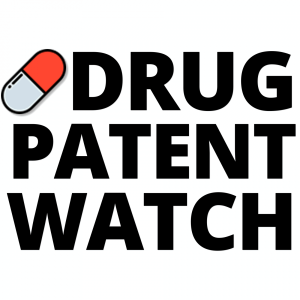
- Humira (adalimumab)
Manufacturer: AbbVie
Original patent expiration: 2016
Extended protection until: 2034 in the U.S.
Humira, used to treat various autoimmune diseases, has become the world’s best-selling drug. AbbVie has fiercely protected its patent through a strategy known as “patent thickets,” filing over 100 additional patents related to the drug’s manufacturing process, formulation, and methods of treatment[1].
- Revlimid (lenalidomide)
Manufacturer: Celgene (now part of Bristol Myers Squibb)
Original patent expiration: 2019
Extended protection until: 2027 (with limited generic entry from 2022)
Revlimid, a treatment for multiple myeloma, has benefited from a combination of patent extensions and settlements with generic manufacturers to delay full generic competition[1].
- Lyrica (pregabalin)
Manufacturer: Pfizer
Original patent expiration: 2010
Extended protection until: 2018 in the U.S., 2017 in the UK
Lyrica, used for neuropathic pain and epilepsy, received multiple patent extensions based on new medical uses discovered after its initial approval[1].
- Lantus (insulin glargine)
Manufacturer: Sanofi
Original patent expiration: 2015
Extended protection until: 2028 for certain formulations
Sanofi has employed various strategies to extend Lantus’s patent life, including developing new delivery devices and formulations[1].
- Enbrel (etanercept)
Manufacturer: Amgen
Original patent expiration: 2012
Extended protection until: 2029 in the U.S.
Enbrel, used for autoimmune disorders, has benefited from additional patents on its manufacturing process and formulation[1].
- Viagra (sildenafil)
Manufacturer: Pfizer
Original patent expiration: 2012
Extended protection until: 2020 in the U.S. (for certain uses)
While Viagra’s main patent expired in 2012, Pfizer managed to extend protection for its use in treating pulmonary arterial hypertension until 2020[1].
- OxyContin (oxycodone)
Manufacturer: Purdue Pharma
Original patent expiration: 2013
Extended protection until: 2030 for abuse-deterrent formulations
Purdue Pharma extended OxyContin’s patent life by developing new abuse-deterrent formulations[1].
- Lipitor (atorvastatin)
Manufacturer: Pfizer
Original patent expiration: 2011
Extended protection until: 2017 in some markets
Lipitor, once the world’s best-selling drug, benefited from patent term extensions and pediatric exclusivity[1].
- Crestor (rosuvastatin)
Manufacturer: AstraZeneca
Original patent expiration: 2016
Extended protection until: 2023 for certain indications
AstraZeneca successfully extended Crestor’s patent life through new use patents and pediatric exclusivity[1].
- Nexium (esomeprazole)
Manufacturer: AstraZeneca
Original patent expiration: 2014
Extended protection until: 2018 in the U.S.
Nexium’s patent life was extended through a combination of patent term extensions and new formulation patents[1].
“The pharmaceutical industry’s ability to extend patent protection for blockbuster drugs has significant implications for healthcare costs and access to medicines. While these strategies are legal, they raise important questions about the balance between innovation incentives and affordable healthcare.”
Table of Contents
The Impact of Extended Patents
The extension of drug patents has far-reaching consequences. For pharmaceutical companies, it means billions in additional revenue. For patients and healthcare systems, it often results in higher drug prices and delayed access to more affordable generic alternatives.
Critics argue that some of these patent extension strategies, particularly “patent thickets,” may stifle innovation and unfairly delay generic competition. Proponents, however, contend that extended patent protection is necessary to incentivize the risky and expensive process of drug development.
As the debate continues, policymakers worldwide are grappling with how to strike the right balance between rewarding innovation and ensuring access to affordable medicines. The future of drug patents will likely involve ongoing legal battles, policy discussions, and potential reforms to the patent system.
Citations:
[1] http://www.law.nyu.edu/sites/default/files/upload_documents/David%20Abrams%20AND%20Bhaven%20Sampat.pdf
[2] https://academic.oup.com/jlb/article/5/3/590/5232981?login=false
[3] https://en.wikipedia.org/wiki/Patent_medicine
[4] https://jamanetwork.com/journals/jamainternalmedicine/article-abstract/2818277
[5] https://prospect.org/health/2023-06-06-how-big-pharma-rigged-patent-system/
[6] https://www.fiercepharma.com/pharma/decade-s-top-10-patent-losses-featuring-seismic-sales-shifts
[7] https://theprofessorisin.com/2016/08/19/dr-karens-rules-of-the-academic-cv/
[8] https://time.com/6257866/big-pharma-patent-abuse-drug-pricing-crisis/


